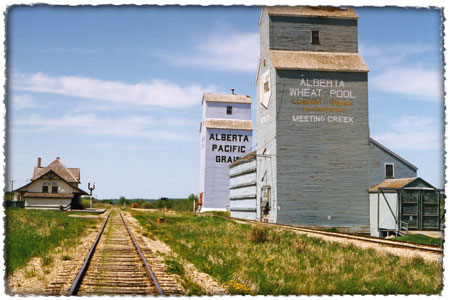
What is the purpose of a National Historic Site?
-physical landmark of events and places presenting the history of diversity in Canada, as not to be lost into the generic British cultural past
What does the former CPR Railway Station (Winnipeg Railway Station (Canadian Pacific) National Historic Site of Canada) represent?
“The magnificence of this former CPR station in Winnipeg reflected the extraordinary prosperity of Winnipeg: the gateway to the Prairies. It also echoed the boundless optimism of those who passed through its great halls. Waves of newcomers, each with visions of a better life, and so they still come today. Each wave introduces new ways of doing things – new dreams and new visions. The challenge for people who came before is how to accommodate these new dreams and visions.”
http://www2.parkscanada.gc.ca/apprendre-learn/prof/racines-roots/itm4-video/continent_e.asp
“The former Canadian Pacific Railway (CPR) Station is one of the province's most notable sites. Between 1904, when the building was completed, and 1914, when the great waves of immigration were dwindling, thousands of Prairie homesteaders passed through its grand portico.
The station was designed by the renowned Montreal firm of Edward and W.S. Maxwell. At the Winnipeg CPR Station, the Maxwell brothers created an early Canadian example of the Beaux-Arts Classical style. That style was very popular throughout Europe and North America for the construction of large public buildings. The huge columns of the station's portico and the richly ornamented façade are hallmarks of the style. The great size of the building, and the choice of style, reflected the CPR's prosperity and ex-pectations for an illustrious future for the West.”
http://www.gov.mb.ca/chc/hrb/prov/p076.html
This site is unique because it represents the cultural diversity that existed because of immigration in to the West. ‘Most designated heritage sites preserved in Manitoba either have a strong association with the Hudson’s Bay Company or are associated with the stronghold Ottawa and the military were able to assert on the West.(Ricketts, 11)’
In the 19th century Canada population was predominantly British and French. It was essentially a variant of British culture where the majority of the population was white, protestant, anglo-saxon, and English speaking. Canada’s west was largely unsettled. The Canadian government saw settling the west as synonymous with economic success for the country at large. Sir John A. MacDonald passed the Dominion Lands Act in 1872 that would provide settlers with 160 acres of land in the west for a small $10 fee. “Macdonald’s governments opened the Western prairies for settlement by making treaties with aboriginal peoples, surveying the land and offering homesteads, and creating the North-West Mounted Police to maintain law and order.” Great Britain was the first target of the Dominion Lands Act to settle the west but the invitation was extended to a variety of Northern and Eastern Europeans. The goal of the Prime-Minister was to settle the west with a largely homogeneous population. Those who settled the west around the turn of the century were Irish, German, Russian, Scandinavian, and Icelandic.
This site is unique because it doesn’t represent the greater British culture that existed, especially in central Canada and the East, but the great variety of immigrants who co-existed and eventually assimilated.
http://www.primeministers.ca/macdonald/issues.php
Recommended Reading
Knowles, Valerie. Strangers at our Gates: Canadian Immigration and Immigration Policy, 1540-1997. (Toronto: Dundurn, 1997).





















No comments:
Post a Comment